In recent years, the emergence of smart packaging has led to a major shift in the packaging industry. Smart packaging has continued to change the concept of logistics systems and convenience for companies. It has also brought many benefits to manufacturers and consumers. Intelligent packaging technology provides companies safe, efficient, and cost-saving packaging solutions. It also helps consumers get the best global logistics experience.
What is Smart Packaging?
You can think of smart packaging as a term used to describe packaging. It has been designed with additional functionality beyond simply containing and protecting a product. Smart packaging technology offers a new meaning to convenience. It puts the consumer at the center of the business. It involves the integration of advanced technologies and materials into packaging. This combination can effectively improve its functionality and enhance its sustainability. Intelligent packaging technology offers a great solution for tracking logistics and supply chains. Such as apparel, food, and electronics. It can help companies effectively improve the consumer shopping experience and safety.
Intelligent packaging technology is more cost effective than traditional packaging. It improves the efficiency of the supply chain. It can help companies speed up product delivery and achieve a higher item protection standard. At the same time, the technology helps reduce scrap generated during production and logistics.
Related Articles: RFID Waste Management in the Circular Economy
Benefits of Intelligent Packaging
Smart packaging can provide many benefits to both consumers and businesses.
Extension of Shelf Life
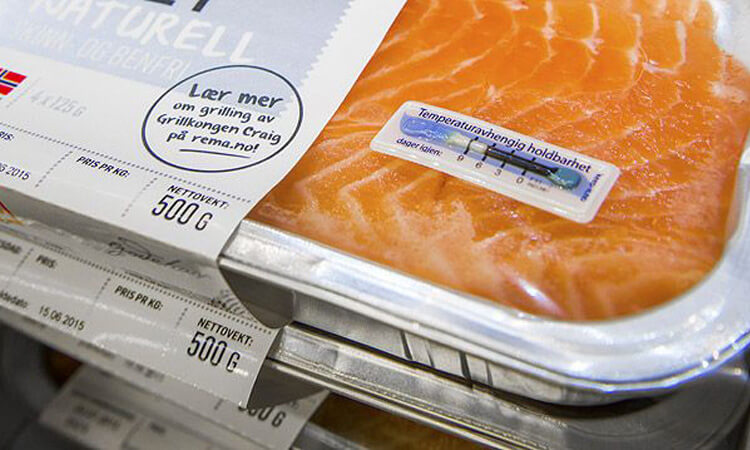
Intelligent packaging controls temperature, humidity, oxygen, and other factors that affect spoilage. Controlling these factors can effectively extend the shelf life of perishable products. You can use the smart label to track the temperature and end date of the product. Active packaging systems can release or absorb gases to maintain the desired atmosphere.
Product Safety and Quality
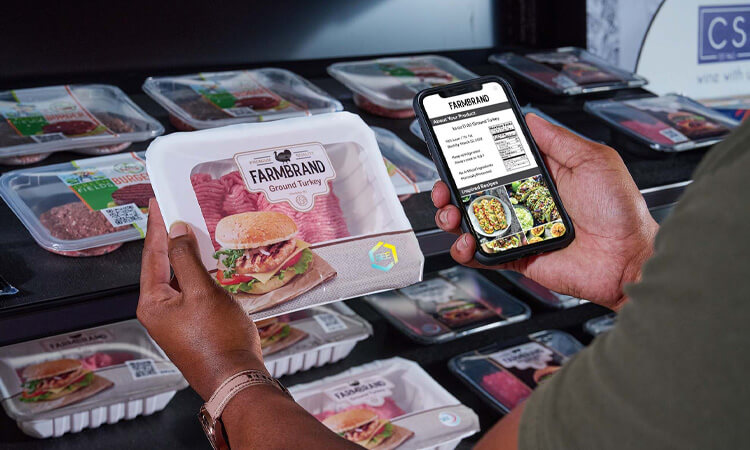
You can improve product security by using smart packaging to detect and prevent contamination or tampering. For example, sensors can track a product’s pH, temperature, or pressure to ensure that it is stored and transported properly. Security features such as holograms and RFID tags can prevent counterfeiting and fraud.
Reduction of Waste
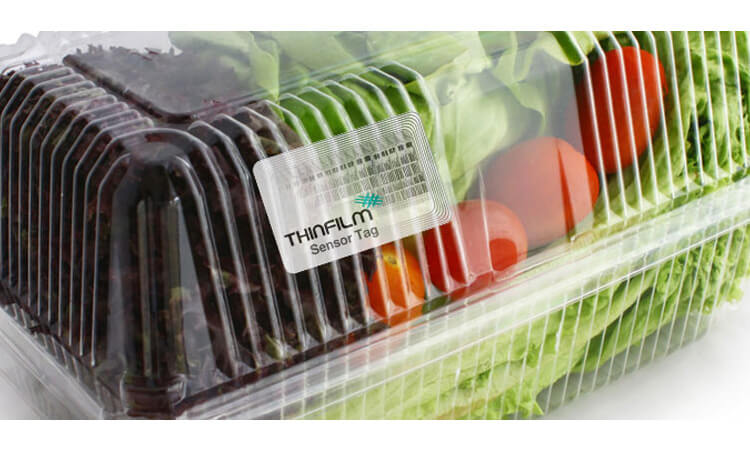
Smart packaging can reduce waste by optimizing size, shape, and materials. This means it can reduce excess and thus increase recyclability. It’s as if biodegradable and compostable packaging materials can break down naturally in the environment. Reusable packaging systems can reduce the need for disposable containers.
Related Articles: Smart Materials and Structures
Reduce Carbon Emissions
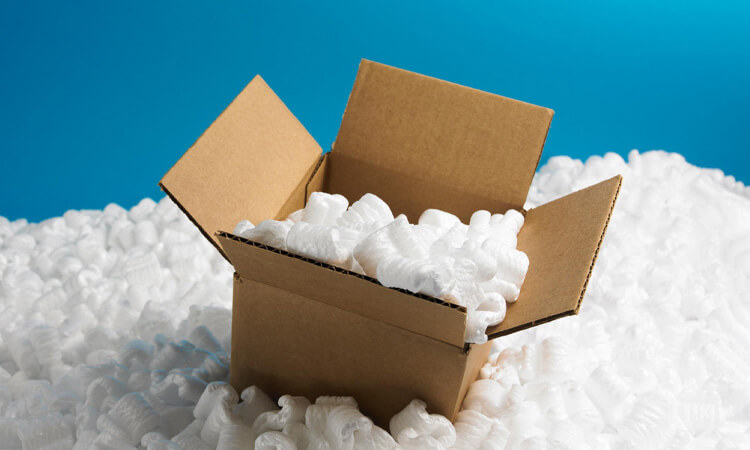
Intelligent packaging can help people reduce the energy and resources needed to transport, store and dispose of it. This way, you can use it to reduce carbon emissions. The use of lightweight packaging can reduce vehicle fuel consumption. And smart logistics systems can help optimize supply chains and reduce waste.
Improved Safety & Convenience
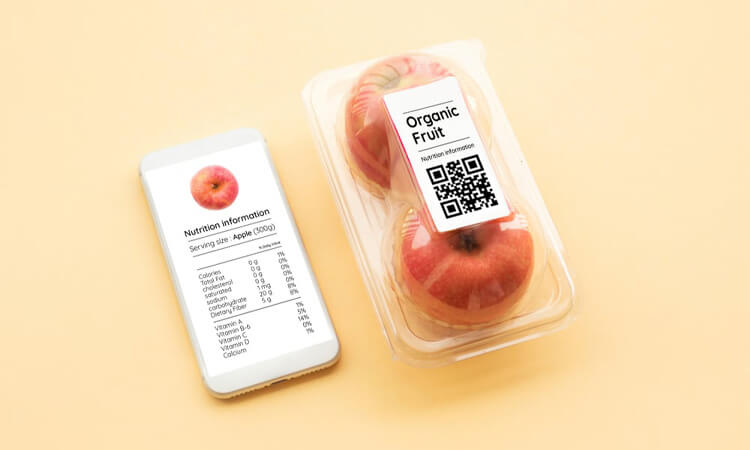
Another advantage of intelligent packaging is the increased safety and convenience it offers. Smart labels provide information such as product end dates, which helps ensure that consumers use products correctly. Smart packaging materials such as smart film can help extend the shelf life of products, resulting in less waste and less spoilage. RFID tags can also help track items, reducing theft and improving product traceability.
Greater product visibility
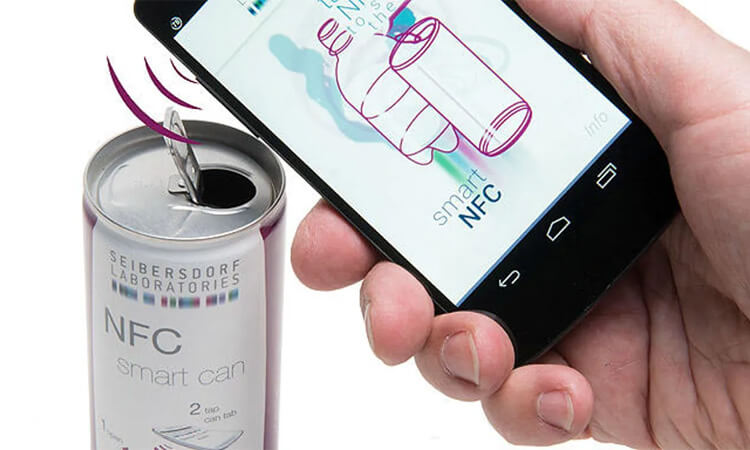
Intelligent packaging can provide additional information or interactivity to consumers. They can help to increase brand awareness and engagement.
Examples of Smart Packaging
We can see many different types of intelligent packages in the market. You can choose the package you want according to your needs.
Intelligent Labels
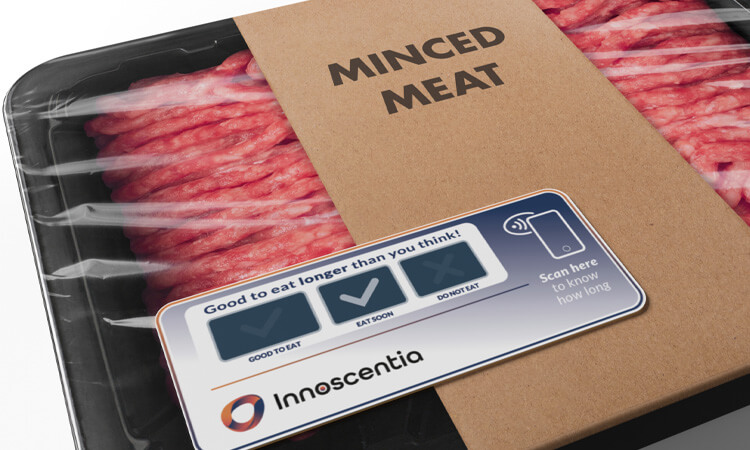
Often we use intelligent labels to track where products come from and where they go. These tags display information about the product or its environment. You can put them can be embedded in sensors and RFID chips. You can also use other technologies to collect and send data, such as temperature, humidity, location, or end date.
Active Packaging
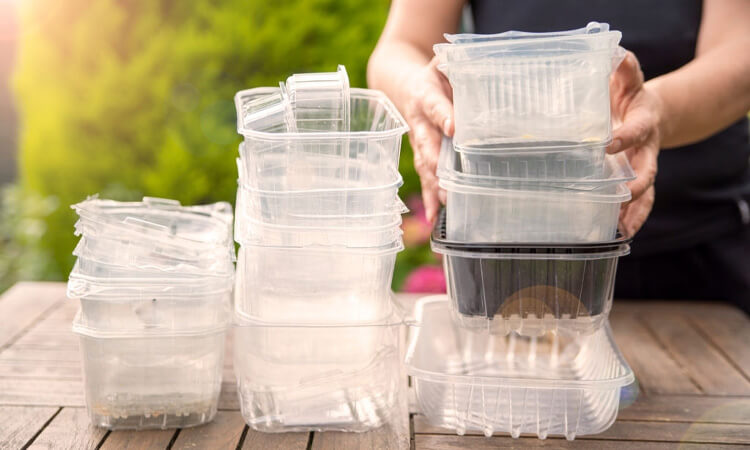
Active packaging actively interacts with a product or environment to maintain or enhance its quality. Commonly, active packaging can release or absorb gases, moisture, or other substances in a system. In doing so, they maintain the desired atmosphere or prevent deterioration.
Security Packaging
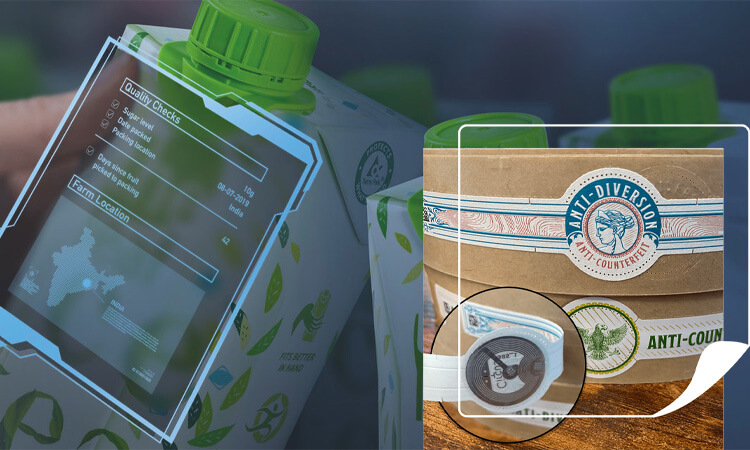
Secure packaging includes features or technologies that prevent counterfeiting, tampering, or fraud. Some of the more popular ones on the market are holograms, RFID tags, and watermarks. Visual or electronic indicators are also difficult to replicate or alter.
Sustainable Packaging
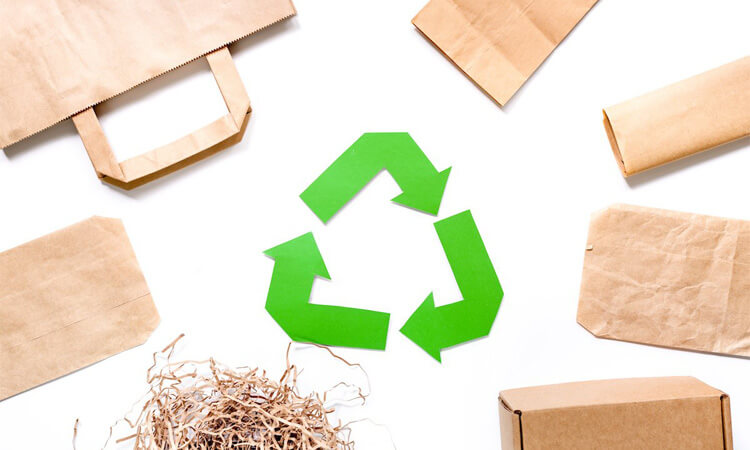
Sustainable packaging is designed to reduce the impact on the environment. It also maximizes the resource efficiency of the product. The more widely circulated are recyclable materials, biodegradable materials, or reusable packaging systems. These sustainable packagings offer a reasonable solution to reduce waste and pollution.
Smart Packaging Applications
Intelligent packaging has various applications in various industries, including food and pharmaceuticals.
Smart Packaging in the Food Industry
The industry that uses smart packaging most frequently is the food industry. There are countless benefits to using smart packaging in the food industry.
- Improve food safety. Smart packaging can include features such as temperature sensors and antimicrobial agents. It can effectively help prevent the growth of harmful bacteria and maintain food safety.
- Improving food quality. You can use technologies such as MAP in smart packaging to extend the shelf life of perishable products. This technology can go a long way in ensuring they reach the consumer with the highest quality.
- Improve sustainability. You can use more environmentally friendly and easily recyclable materials in intelligent packaging. These materials can help reduce their environmental impact.
- Enhanced convenience. Smart packaging can have QR codes or NFC tags, for example, attached to it. These tags provide consumers with more information or an interactive experience. The use of tags facilitates their convenience in using the product.
Related Articles: RFID Food Waste Disposal Systems: A Data-Driven Approach to Food Waste Reduction
Smart Packaging in the Pharmaceutical Industry
Secondly, the pharmaceutical industry is the most common industry using smart packaging. It has led to a whole new upgrade for the industry. Thanks to intelligent packaging, it has improved in every aspect.
- Improve patient safety. You can take on features such as tamper-resistant seals and traceability systems in smart packaging. These features help ensure that patients get the right medication and that it is safe to use.
- Guarantee product quality. You can have sensors built into intelligentpackaging. These sensors will track the condition of the drug during transport and storage. It helps ensure they are of the highest quality when they reach the patient.
- Increased sustainability: Intelligent packaging can use more environmentally friendly and easily recycled materials. It helps reduce the environmental impact.
- Enhanced convenience. Smart packaging allows us to use features such as dose reminders or self-management systems. These features make it easier for patients to take their medications.
Challenges of Implementing Smart Packaging
There are indeed many benefits to using these smart packages. But you will also need to face some challenges in implementing them.
- Cost: Intelligent packaging usually involves the use of advanced materials and technologies. This, of course, may increase the cost of production and distribution. These costs can be a barrier for companies that are small or consume large quantities of products and require low-cost packaging.
- Complexity: The design and implementation of intelligent packaging can be relatively complex. It is particularly problematic for products that require specific or customized solutions. You will have difficulty integrating smart packaging with existing production and logistics systems. Also, you cannot standardize the technology across different products and markets for the time being.
- Regulation: Intelligent packaging is governed by various regulatory and legal frameworks. The terms of the constraints may differ depending on the country or sector. The difference is that certain materials or technologies may be restricted or need approval. On the other hand, data collected by intelligent packaging may be subject to privacy and security rules.
- Consumer acceptance: Intelligent packaging may also face resistance or skepticism from consumers. Consumers need to become more familiar with the technology before they can trust them. They may also be concerned about the impact of the technology on their privacy or health. We must communicate the benefits and risks of Intelligent packaging clearly and transparently. We also need to engage consumers in the design and development process.
- Recycling: It is difficult for us to re-integrate electronic components into packaging for recycling again. So this poses a challenge for companies trying to improve their sustainability.
How to Implement Smart Packaging
Before implementing an intelligent packaging system, you must first define the intralogistics process. This process involves collecting items, shipping, packaging, assembling, cleaning, packing, and shipping. It is primarily used to track and record the flow of materials from one place to another. Managing the logistics process is a prerequisite and foundation for implementing smart packaging solutions.
After the logistics process is sorted out, we can customize the required hardware solution according to the needs of the logistics process. We need to break the boundaries between sensors, beacons, and tags so that you can transport data interactively in real time. Hardware solutions can collect and transmit data in real-time. They enable accurate data management, cargo tracking, and visual display.
The key to implementing a software solution is the design of the database. It can store the collected data and enable data analysis and archiving. In turn, it provides managers with accurate and quick suggestions for decision-making.
After the intelligent packaging system corresponds to completion, the last step is to execute testing. Testing ensures the correctness of the real data and system functionality. This is also the key to the success of the implementation. You can customize these tests in detail for different companies and industries. This is to ensure that the desired implementation approach is met.
The Future of Smart Packaging
The future of smart packaging has endless possibilities. It creates a new way of communicating information to consumers. It allows for a whole new way of presenting product packaging.
As technology evolves, we expect to see more innovative and sophisticated packaging solutions being developed. Perhaps some of these trends and technologies that will shape intelligent packaging will emerge:
- Increased Focus on Sustainability and Recyclability
In the future, priority may be given to using packaging systems that make sustainable sense. In particular, those systems are made of recyclable, biodegradable, and reusable materials. These systems can significantly reduce waste and carbon emissions. It requires different stakeholders to work together. Among them are governments, companies, and consumers whose cooperation can facilitate the adoption of circular business models and closed-loop systems.
- Greater Customization and Personalization
Intelligent packaging will also lead to more customized and personalized packaging solutions. It can meet the specific needs and preferences of different market segments. You can choose to customize the packaging with a personalized message or design. You can also look for packaging adapted to different languages or cultures.
- Growing Demand for Intelligent Packaging in Emerging Markets
Intelligent packaging will also benefit from emerging markets such as Asia, Latin America, and Africa. This is due to their growing demand for advanced and sustainable packaging solutions. The rapid population growth, urbanization, and increased disposable income in these locations create tremendous opportunities for smart packaging. You can easily reap huge benefits from these opportunities.
- The Growth of the Internet of Things (IoT)
The Internet of Things refers to an interconnected network of physical objects equipped with sensors and other technologies. The advent of the IoT network allows us to communicate and exchange data. As the IoT grows, we will likely see more smart packages connected to the Internet. These Internet-connected devices can share data with other devices.
Smart packaging has the potential to revolutionize the way products are packaged and used. Its advantages include reduced waste, improved safety and convenience, and better use of resources. Despite its cost and lack of standards, its use is growing. Its potential to change the world is becoming clear. It is an exciting new technology that will bring about positive changes in how we go about our lives.
About Smart Packaging FAQs
-
What is smart packaging, and how is it different from traditional packaging?
Smart packaging incorporates advanced technologies to provide functionality beyond basic containment and protection. It differs from traditional packaging in that it offers real-time monitoring, active preservation, and interactive engagement with consumers.
-
What are the benefits of using smart packaging, and in what applications is it most commonly used?
The benefits of using innovative packaging include improved product safety, reduced waste, increased consumer engagement, and improved supply chain management. It is commonly used in food and beverage, pharmaceuticals, and logistics applications.
-
What are some of the most common types of smart packaging technologies, and how do they work?
The most common types of smart packaging technologies include time-temperature indicators, gas sensors, QR codes, RFID tags, and NFC tags. They work by detecting and responding to environmental conditions, providing information to consumers, and tracking products through the supply chain.
-
How can smart packaging be used to improve product safety and reduce waste?
Smart packaging can improve product safety and reduce waste by real-time monitoring of temperature, humidity, and other environmental factors that can impact product quality. This can help to prevent spoilage, reduce waste, and improve the overall safety of products.
-
What is the role of data in smart packaging, and how is it collected, analyzed, and used?
Data plays a crucial role in smart packaging by providing real-time monitoring and tracking of products. It is collected through sensors and other technologies and is analyzed to provide insights into product quality, supply chain performance, and consumer behavior.
-
How can smart packaging be used to improve supply chain management and logistics?
Smart packaging can improve supply chain management and logistics by tracking and monitoring products as they move through the supply chain. This can help to optimize inventory management, reduce transportation costs, and improve overall efficiency.
-
What are the environmental implications of using smart packaging, and how can those concerns be addressed?
The environmental implications of using smart packaging include using non-biodegradable materials and the potential for increased waste. These concerns can be addressed through the use of sustainable materials, the development of recycling programs, and the use of biodegradable and compostable packaging.








